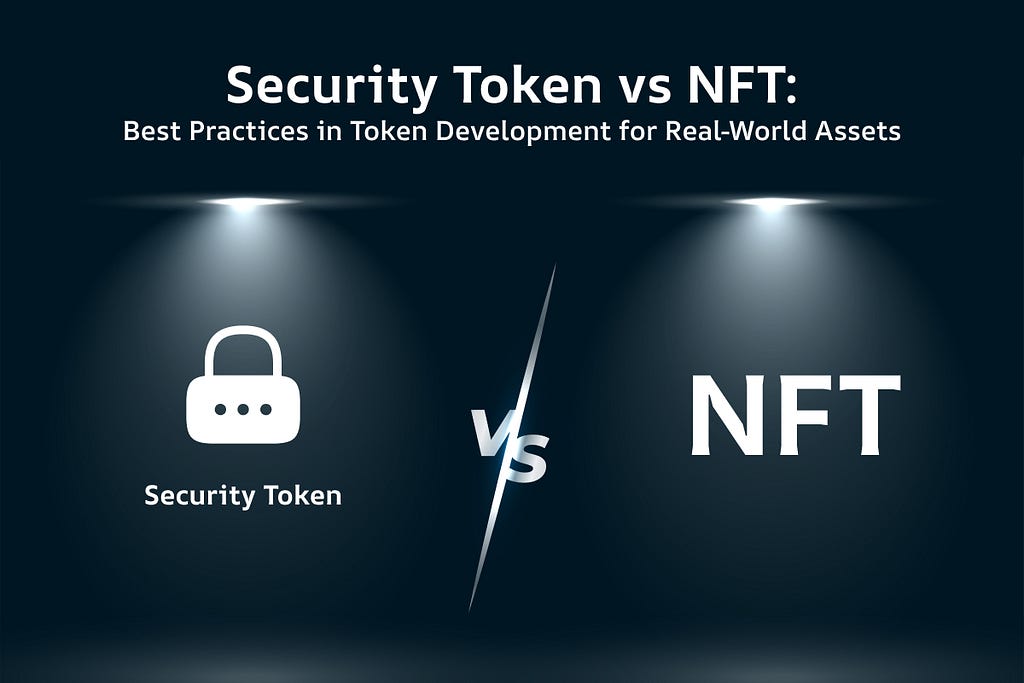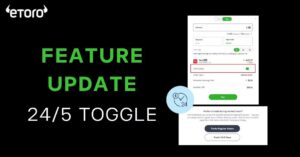
Tokenization has redefined how businesses manage, trade, and invest in digital and physical assets. From art and media to property and equity, tokens are now bridging traditional markets with blockchain technology. Among the most widely discussed digital assets are Security Tokens and Non‑Fungible Tokens (NFTs). Both enable asset digitalization but serve entirely different purposes and apply to diverse real‑world contexts.
While Security Tokens represent financial assets tied to compliance, ownership, and regulatory frameworks, NFTs signify unique ownership rights over digital or physical items. Understanding their difference is essential for enterprises planning to tokenize real‑world assets or explore blockchain‑driven investment models. This article clarifies the distinction between Security Tokens and NFTs, outlines practical use cases, and offers proven best practices for development, compliance, and technical architecture.
For organizations pursuing tokenization, partnering with experienced teams offering NFT Development Services can streamline the process from concept to launch and reduce risks significantly.
Understanding Tokenization and Its Growing Relevance
Tokenization means creating a digital representation of an asset on a blockchain. By turning ownership rights or other asset characteristics into tokens, businesses achieve greater liquidity, traceability, and transparency. Tokenization is especially important for assets that are traditionally illiquid — such as real estate, art, private equity, or luxury collectibles.
When companies decide to tokenize assets, they mainly choose between two types of blockchain tokens: Security Tokens and NFTs. The choice depends on the nature of the asset, regulatory obligations, and target audience.
What Are Security Tokens?
Security Tokens represent ownership of financial assets, investment shares, or instruments subject to securities regulations. They often symbolize one of the following:
- Equity ownership in a company
- Debt instruments such as bonds or notes
- Profit‑sharing rights or revenue‑linked tokens
These tokens comply with security laws, such as SEC regulations in the United States or similar legal frameworks elsewhere. Each Security Token carries identifiable ownership, granting investors rights similar to traditional shareholders.
Security Tokens bridge the gap between traditional finance (TradFi) and blockchain‑based fundraising. For investors, they promise transparency, faster settlement, and lower costs. For issuers, they enable global investor participation without intermediaries like brokers or clearing systems.
What Are NFTs?
NFTs (Non‑Fungible Tokens) represent unique digital assets recorded on a blockchain. Unlike fungible tokens such as Bitcoin or ERC‑20 assets, NFTs are indivisible and non‑interchangeable. Each NFT possesses distinctive metadata and a verifiable proof of authenticity.
NFTs first gained attention through digital art and collectibles. Today, they have evolved far beyond entertainment use cases. Businesses use NFTs for:
- Real estate tokenization
- Supply chain tracking
- IP licensing and royalties
- Ticketing
- Gaming assets
The uniqueness of NFTs makes them ideal for representing ownership over one‑of‑a‑kind items, both digital and physical.
Compliance and the Role of Smart Contract Auditing
Security Tokens and NFTs operate on smart contracts — self‑executing programs that define how tokens behave, are minted, or are transferred. Errors or vulnerabilities in smart contracts can lead to irreversible losses, compliance breaches, and investor mistrust. Therefore, smart contract auditing services are essential for all token projects, especially those involving real‑world asset tokenization.
Auditing verifies that the token’s logic, permissions, and compliance procedures align with business objectives and legal frameworks. It also protects against:
- Unauthorized minting or transfers
- Reentrancy and over‑flow issues
- Logic flaws causing unintended behavior
- Gaps in ownership verification or access control
In tokenized ecosystems, well‑audited contracts build investor confidence and simplify regulatory reporting.
Key Differences Between Security Tokens and NFTs
Below is a detailed comparison outlining how Security Tokens differ from NFTs across major business, legal, and technical factors.

Real‑World Asset Tokenization and Market Adoption
Real‑World Asset (RWA) Tokenization is becoming one of blockchain’s strongest value propositions. It allows fractional ownership and liquidity for assets that are traditionally hard to trade. Let’s see how each token type contributes:
- Security Tokens enable regulatory‑compliant tokenization of property, funds, and private equity. Investors can purchase security tokens similar to buying fractional shares.
- NFTs provide unique identifiers for assets like deeds, art, or collectibles, establishing provenance and transfer history without intermediaries.
Real estate developers, art auction houses, and supply chain firms are using these tokens to digitize proof of ownership, streamline onboarding, and expand global reach.
According to market forecasts, the tokenization market is projected to exceed hundreds of billions internationally by 2030, with major adoption in real estate, fine arts, and private equity.
The Legal and Regulatory Dimension
Security Tokens come under strict legal monitoring. Depending on jurisdictions, issuers must comply with KYC (Know Your Customer), AML (Anti‑Money Laundering), and data privacy laws. NFTs, although often unregulated, can enter gray areas when used as securities or fractionalized investment instruments.
Best practices include:
- Consulting legal professionals before token issuance
- Registering with authorities if tokens classify as securities
- Providing detailed whitepapers on token structure
- Verifying each participant via KYC protocols
Failure to meet compliance can result in significant legal and reputational risks for both startups and established enterprises.
Token Standards Driving Security Tokens and NFTs
Security Token Standards
- ERC‑1400: Combines ERC‑20 and ERC‑721 functionalities, providing modular compliance.
- ERC‑1404: Allows transfer restrictions directly within token logic.
- ERC‑3643 (T‑REX): Introduces permissioned token transfers based on verified identities.
NFT Standards
- ERC‑721: Defines ownership and metadata for unique tokens.
- ERC‑1155: Allows batch transfer and management of both fungible and non‑fungible tokens.
- BRC‑721E / Ordinals (Bitcoin): Represents NFTs on Bitcoin rather than Ethereum.
Each standard serves unique requirements depending on asset type, compliance intensity, and on‑chain transparency expectations.
Technical Infrastructure and Development Stack
Developing tokens requires a robust and tested technical infrastructure to maintain performance, security, and compliance. Common components include:
- Blockchain platform (Ethereum, Polygon, Solana, or Avalanche)
- Smart contracts implementing core token logic
- Token storage and wallet integration
- RESTful APIs for DApp and enterprise system integration
- Frontend dashboard for admin and investor operations
NFT and security token projects often integrate with oracles for external data verification and custodial services for institutional investors who prefer managed storage.
Security Best Practices in Token Development
- Smart Contract Audits — Conduct multiple audit rounds by independent professionals before deployment.
- Upgradable Contracts — Use proxy patterns for future flexibility without risking deployed funds.
- Private Key Management — Implement multi-signature authorization for administrators.
- Access Control Lists — Restrict minting, burning, or transfer actions to authorized wallets.
- Transaction Monitoring — Use automated tools to flag suspicious or high-frequency transfers.
Security practices go beyond coding — they reflect governance maturity, user trust, and regulatory readiness.
Integrating NFTs and Security Tokens in a Single Ecosystem
Advanced blockchain ecosystems are now merging NFTs and Security Tokens for hybrid use cases. Example scenarios include:
- Real Estate Tokenization: Each building (NFT) holds metadata; ownership fractions are represented via Security Tokens.
- Asset‑Backed Loans: Collateral NFTs (representing property) secure loans issued as Security Tokens.
- Luxury Collectibles: Certificates minted as NFTs backed by Security Tokens proving fractional ownership.
These convergent models bridge uniqueness with compliance, creating a structured way of tokenizing complex tangible assets.
Fractional Ownership Through NFTs
Fractional NFTs break down a high-value NFT into smaller tokens representing proportional ownership. These are often backed by or interlinked with Security Tokens for legal recognition.
Fractionalization unlocks liquidity and lowers entry barriers for smaller investors. However, when fractional NFTs offer returns or passive benefits, they may fall under securities regulation — requiring appropriate legal setup and audited smart contracts.
Challenges in Tokenization of Real‑World Assets
- Regulatory Uncertainty: Differing global laws complicate security token issuance.
- Liquidity Constraints: Security Tokens cannot be freely traded across decentralized platforms.
- Custody Complexity: Linking physical assets with blockchain proofs requires off-chain validation.
- Scalability: High transaction fees or network congestion affect token usability.
- Investor Education: Understanding token rights and redemption mechanisms is crucial for long-term adoption.
Enterprises must address these barriers through legal planning, partner selection, and ongoing transparency.
The Business Benefits of Tokenization
- Efficiency: Automated settlements reduce operational costs.
- Accessibility: Broader investor reach across jurisdictions.
- Traceability: Immutable transaction history improves audit readiness.
- Speed: Near real‑time transfer of ownership instead of traditional paperwork.
- Transparency: Open-source smart contracts enable accountability.
Both NFTs and Security Tokens amplify business models by introducing liquidity and digital efficiency to asset management.
Selecting the Right Platform for Token Development
Factors to consider while choosing a platform:
- Transaction cost and scalability (Ethereum vs Layer‑2)
- Support for specific token standards
- Developer ecosystem and documentation availability
- Integration with KYC modules and custodial partners
- Platform reputation and security maturity
For example, security token projects might favor Polygon for lower fees and compliance plugins, whereas NFT platforms may prioritize Ethereum or Immutable X for broader marketplace compatibility.
Lifecycle of a Token Development Project
- Requirement Discovery — Define objectives, stakeholders, and compliance zones.
- Token Architecture Design — Choose token standards and metadata structure.
- Smart Contract Development — Code and test token logic.
- Smart Contract Auditing — Perform third‑party review.
- Integration & Deployment — Connect APIs, user dashboards, wallets.
- Ongoing Governance — Manage compliance updates, reporting, and analytics.
Documenting each phase supports regulatory defense and investor transparency during audits or reissuance.
Integrating Compliance Features
Legal compliance features can be directly coded into tokens. Examples:
- Whitelisting only verified investor addresses
- Enforcing holding restrictions (lockup periods)
- Implementing role‑based permissions for transfer approvals
- Handling taxation events via on‑chain logs
Embedding these at the blockchain level ensures rule enforcement without requiring off‑chain systems.
NFT and Security Token Marketplaces
For Security Tokens, trading platforms must adhere to securities laws, commonly known as Security Token Exchanges (STOs). They offer investor verification, controlled trading, and audit trails.
NFTs, however, sell through open marketplaces such as OpenSea, Rarible, and Magic Eden. Some businesses operate private NFT marketplaces tailored to specific brand ecosystems. Combining these approaches provides balance between exclusivity and liquidity.
Designing Tokenomics for Real‑World Assets
Successful token development depends on a resilient economic model. Key parameters include:
- Supply limits and issuance policies
- Governance participation criteria
- Dividend or reward distribution
- Vesting schedules for investors and partners
- Transaction fees and burn mechanisms
Defining a transparent tokenomics framework keeps the project viable and appealing to institutional investors.
Data Privacy and On‑Chain Governance
Although blockchain promotes transparency, some tokenized data must remain confidential. Solutions include:
- Zero‑knowledge proofs for private identity confirmation
- Encrypted off‑chain data storage linked with blockchain hashes
- DAO‑based governance for decentralized decision processes
A secure blend of openness and privacy strengthens tokenholder trust.
Risk Management in Token Projects
Projects entering regulated markets face multi‑dimension risks:
- Legal risk: Misclassification as unregistered securities
- Technical risk: Smart contract exploits
- Operational risk: Key mismanagement or downtime
- Reputational risk: Failing token delivery or disputes
Managing risk requires periodic audits, insurance partnerships, and continuous monitoring through automated compliance dashboards.
Future of Tokenized Real‑World Assets
Underlying blockchain protocols are becoming more interoperable, introducing cross‑chain bridges and custody solutions for real‑world tokens. Over the next decade:
- Tokenized debt and private funds are expected to dominate Security Token offerings.
- NFTs tied to physical assets will expand into logistics, healthcare records, and certifications.
- Regulators will develop clearer frameworks, enabling mainstream investments via blockchain.
Tokenization will drive financial inclusion by simplifying how value moves across global boundaries.
Conclusion
Security Tokens and NFTs both play critical roles in representing real‑world assets on blockchain. Security Tokens uphold investor rights and regulatory compliance, while NFTs provide uniqueness and authenticity. Together, they form a complete toolkit for businesses adopting blockchain‑based asset models.
The choice between the two depends on the kind of asset, compliance obligations, and target user base. Whether your objective is investor fundraising, intellectual property monetization, or digital ownership, adopting clean architecture, strong audits, and transparent compliance protocols is essential for success.
If your business aims to tokenize assets or build next‑generation digital ownership solutions, expert guidance helps you save time and prevent costly mistakes.
Contact us today to build blockchain‑backed ownership models for real‑world assets.
Security Token vs NFT: Best Practices in Token Development for Real‑World Assets was originally published in Coinmonks on Medium, where people are continuing the conversation by highlighting and responding to this story.








